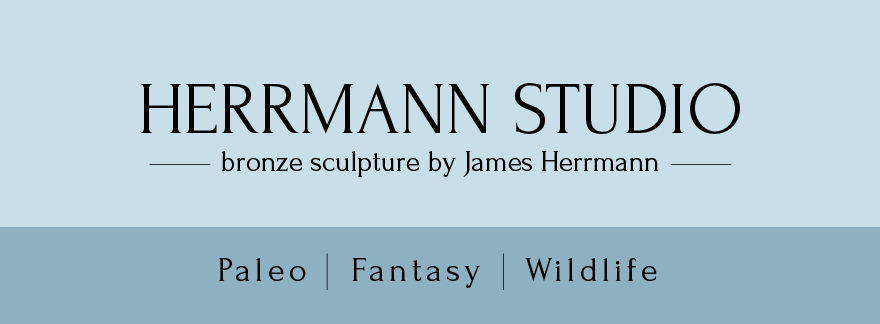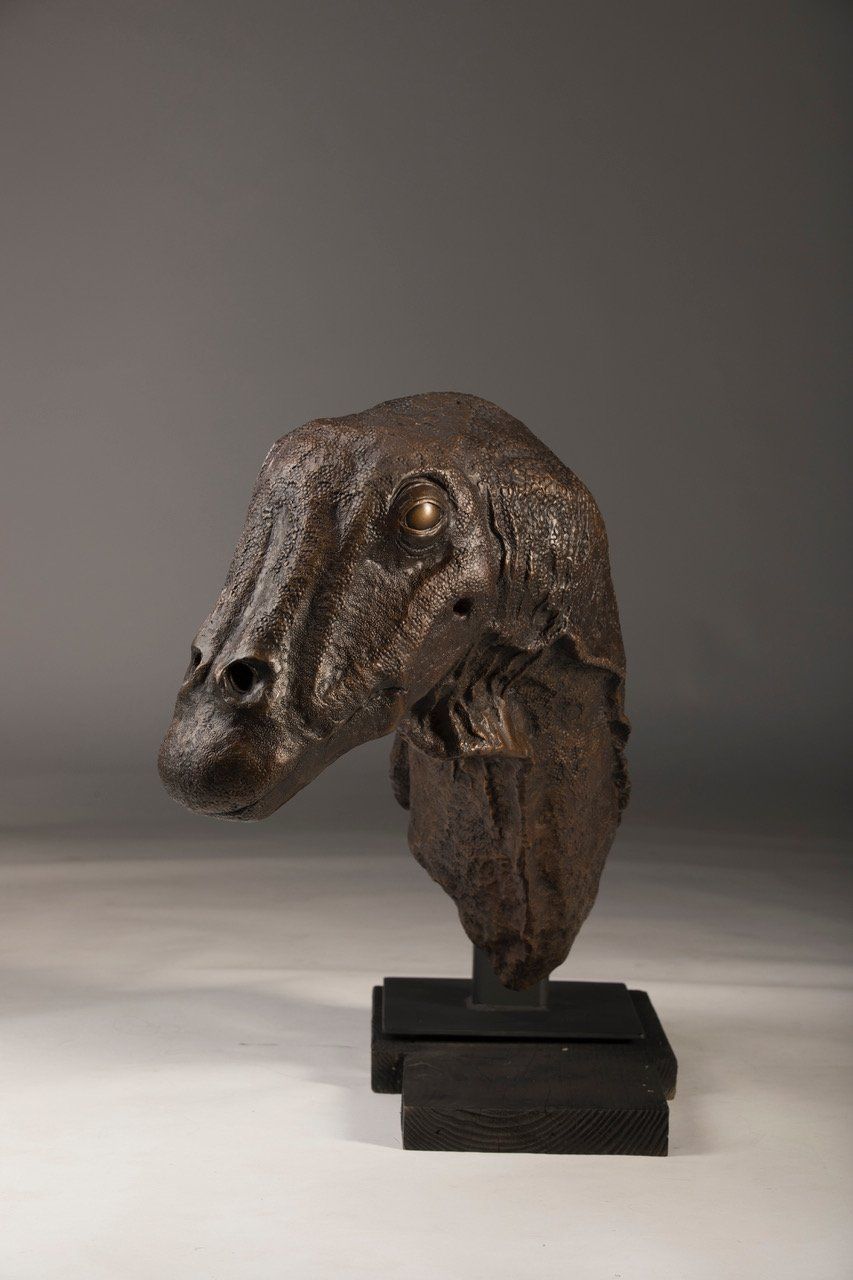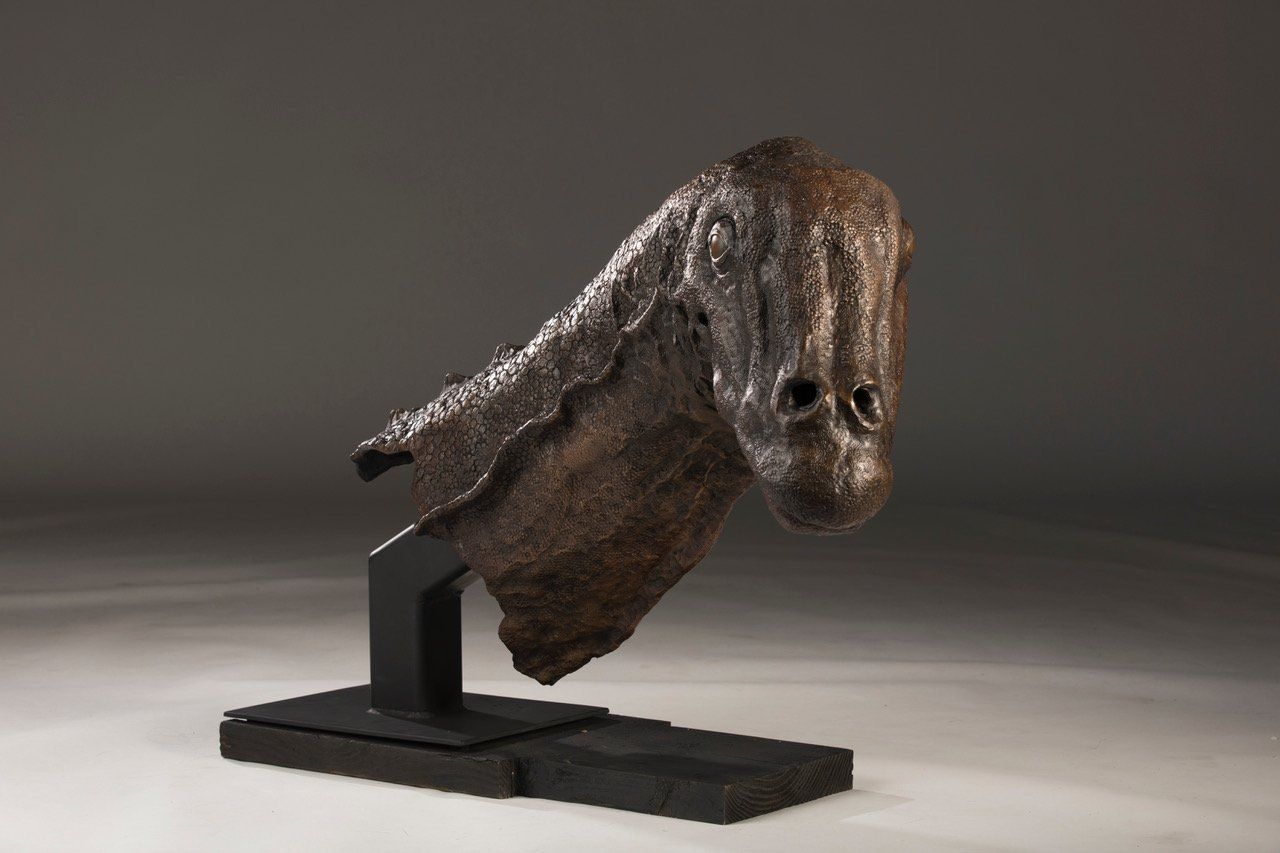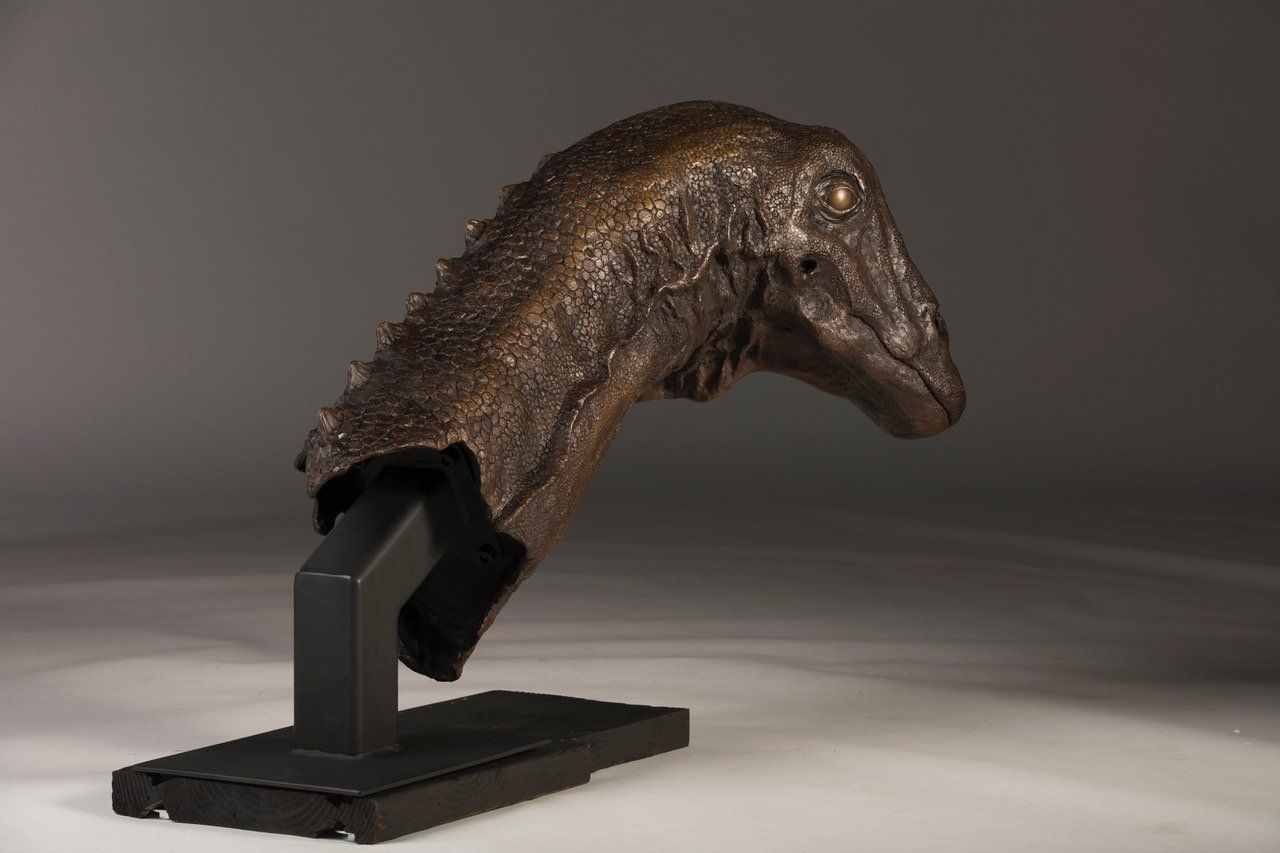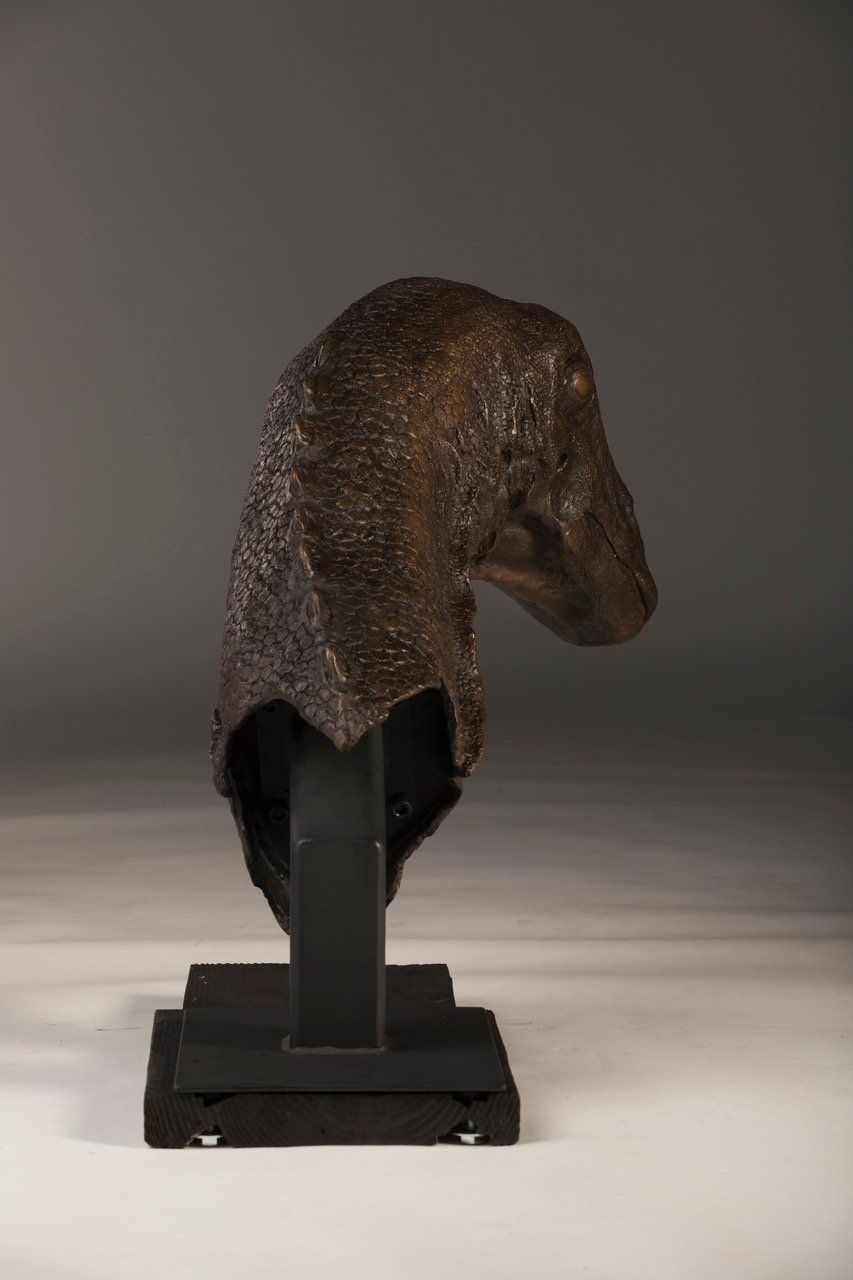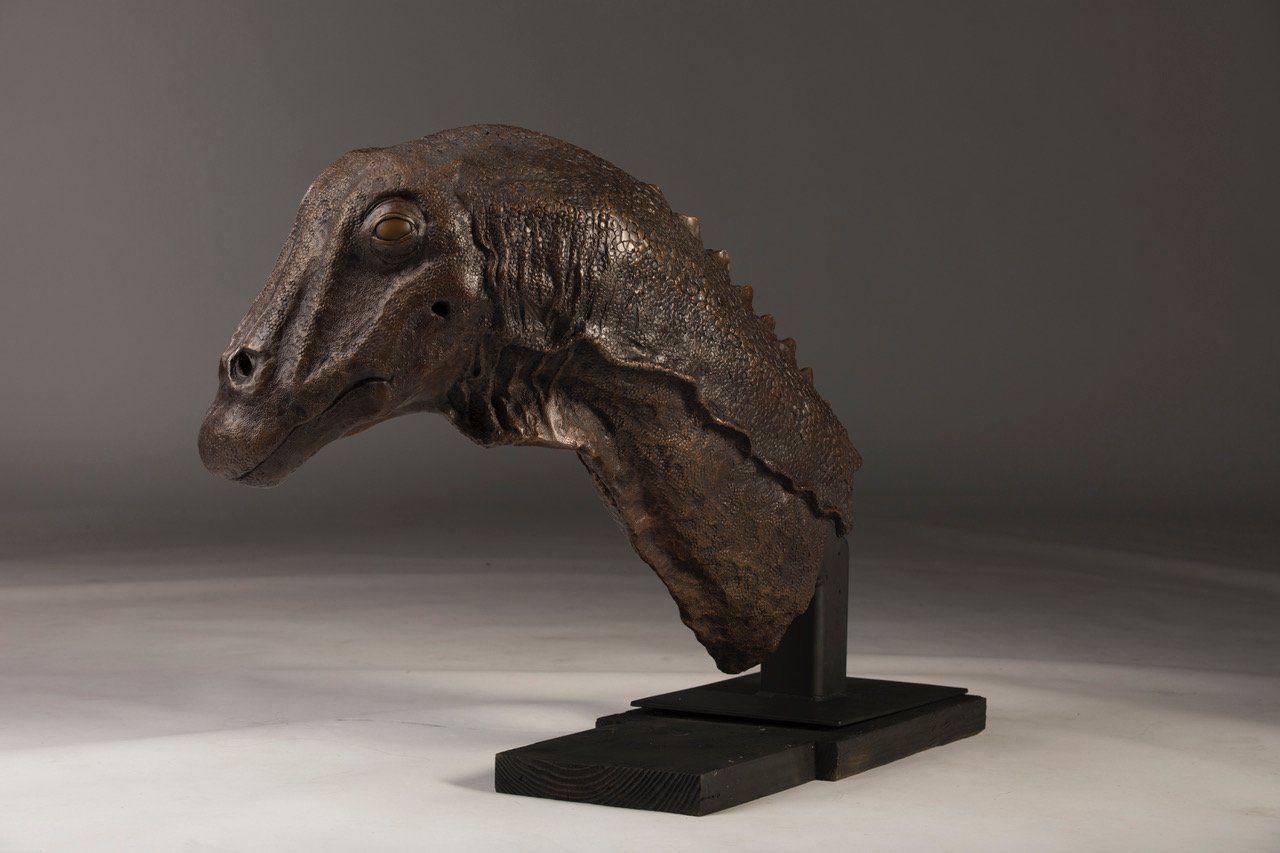Galeamopus Bust
Galeamopus Bust
Medium – Cast bronze
Dimensions – 30”H x 38”W x 12”D
Limited edition of 20 • Price $9,200
The Galeamopus Bust is one of a series of sculptures created as part of a commission for the Cincinnati Museum Center’s dinosaur exhibit that opened in 2018. The cast bronze sculptures offer museum visitors an opportunity to touch replicas of skeletons on exhibit while still being sturdy enough to enjoy the attention of numerous school groups without damage. The creation of these touchable sculptures was deemed especially important for visually impaired museum visitors.
This Galeamopus bust sculpture went through the same developmental process as the other sculptures that I created for the Cincinnati Museum Center. I was given access to skeletal material and supplied with other reference materials from the museum center’s vertebrate paleontologist. I developed an initial sculpture that was then critiqued and altered several times for anatomical accuracy. Upon final approval each sculpture was taken to the foundry for molding and bronze casting.
Galeamopus is a type of diplodocene sauropod that lived during the Jurassic period of the Mesozoic Era. Until relatively recently, the integument (skin) of most dinosaurs was unknown. Fortunately many new fossils have been unearthed that provide new information into the true appearance of these magnificent animals. Based on skin impressions, we know that dinosaurs like Galeamopus were covered in polygonal scales that increased in size from its ventral to dorsal surface i.e.belly to back, and decreased in size from posterior to anterior i.e.back to front, at least along the neck. This scaling pattern continues along the face and jaws with some of the most delicately scaled regions being under the jaw. The presence of dorsal spines along the neck and back are somewhat controversial. Some reconstructions show large spines, others none at all. Spines have been found close to the skeletal remains of diplodocenes but not directly attached or articulated with the rest of the skeleton. A characteristic of the Galeamopus skeleton on display at the Cincinnati Museum Center is the presence of several pathological vertebra fused together with the top parts of the vertebra crushed. What happened to this animal during its life? The vertebra grew together so the injury happened well before this animal died. Was its tail stepped on by a lumbering adult? Was its tail bitten by a predator on the hunt and bears witness to a lucky escape? We may never know but speculating on one day in the life of this Jurassic giant makes this sculpture and the dinosaur that it was based upon seem all the more real because of it.
© 2024
All Rights Reserved | Herrmann Studio LLC | James Herrmann
Permission to reproduce works, whether in print media or any electronic media, or any technologies not in current use, must be obtained prior to use.
